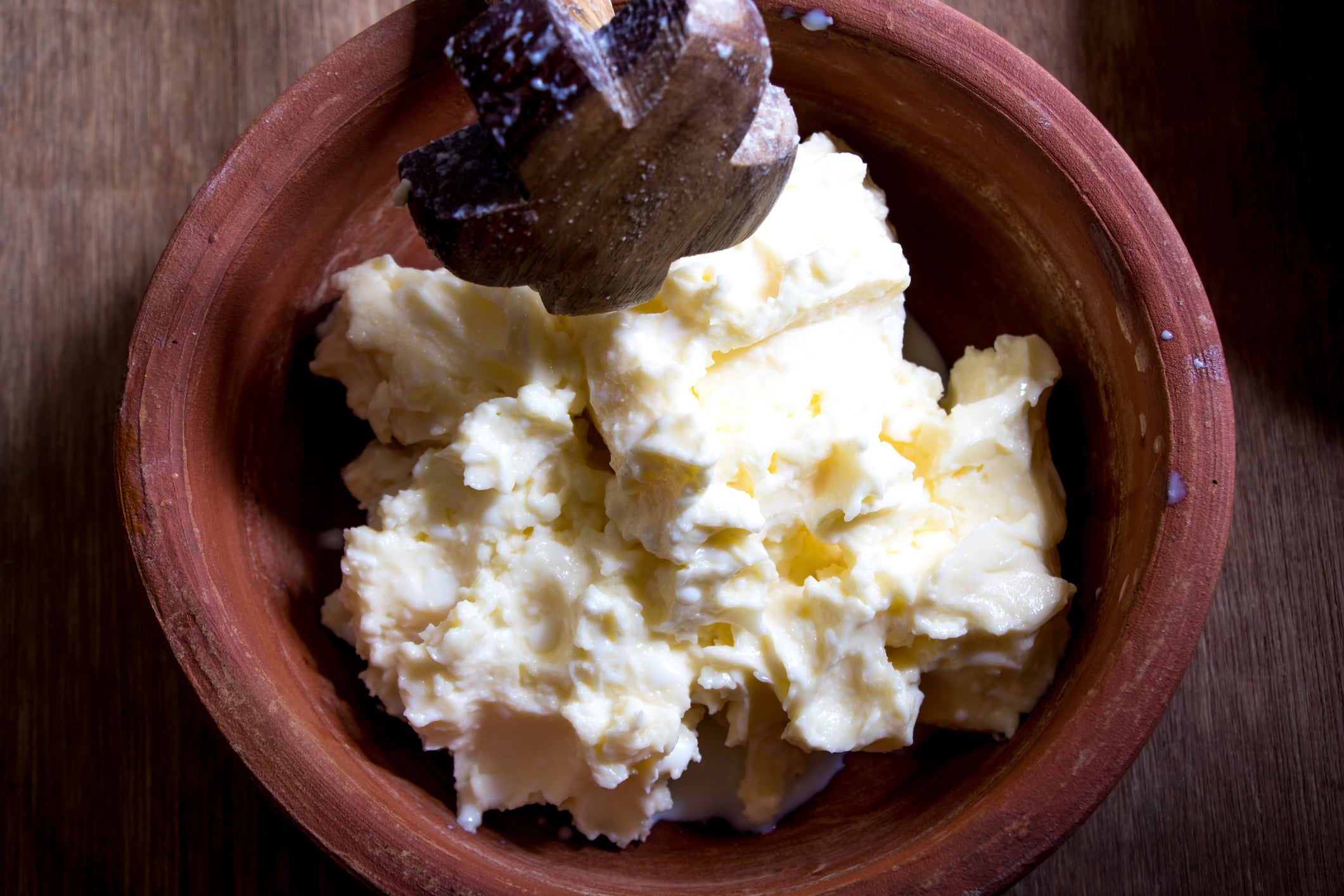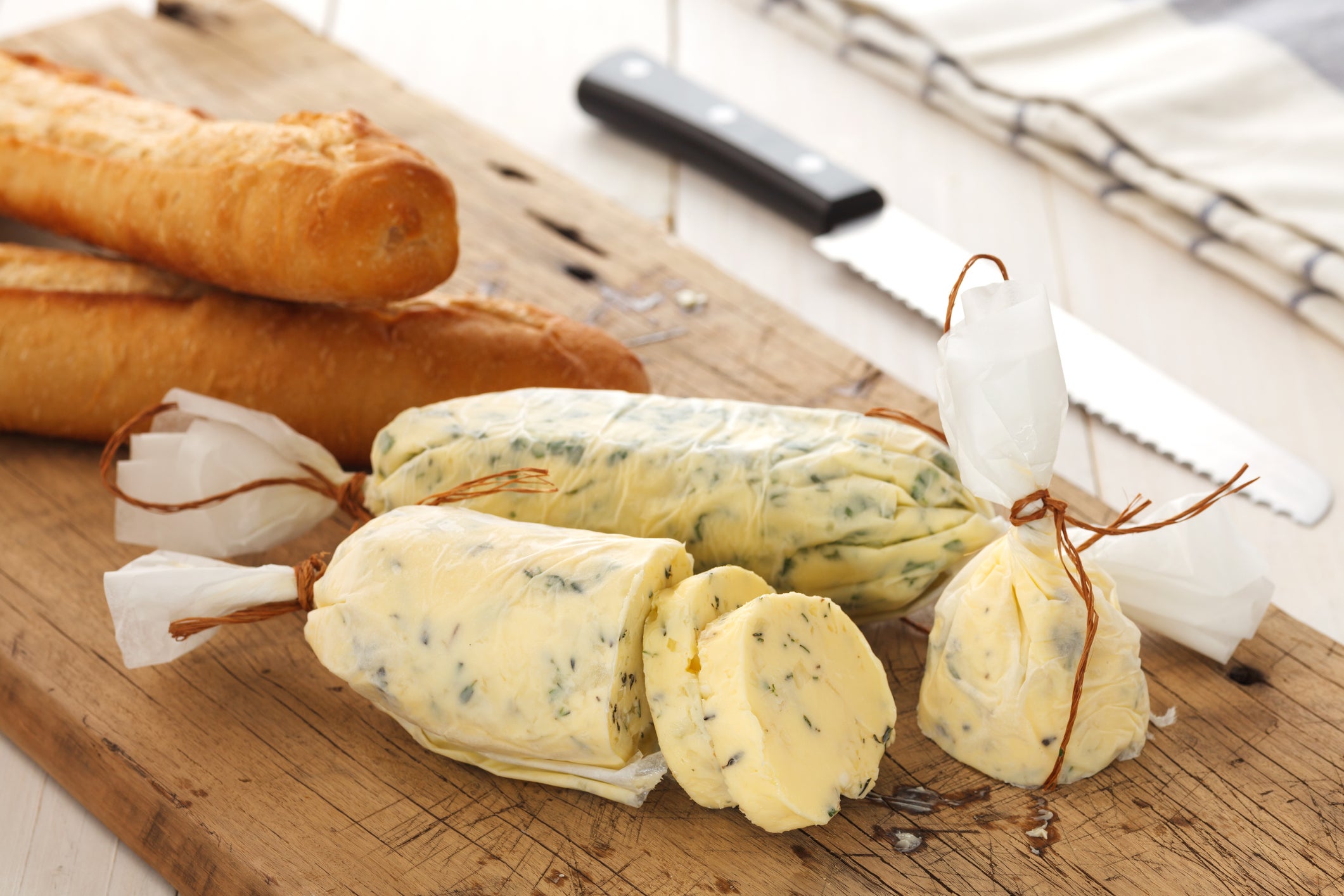
Butter lovers received a shock this week after the price of Lurpak butter in some supermarkets skyrocketed.
Social media posts showed tubs of the beloved butter brand for sale at inflated prices, including £7.25 for a 750g tub in Sainsbury’s.
It comes as food prices continue to rise exponentially across the UK due to inflation, Brexit and the cost of living crisis.
A spokesperson from Arla Foods, who own Lurpak, told The Independent that the increase in its butter prices will help ensure “our farmers receive a fair price for the milk they produce”.
“We understand that recent inflation in food price is hitting many households really hard right now. Unfortunately, our farmers are facing a similar situation with prices for the feed, fertiliser and fuel they need to produce milk, all rising significantly in recent months,” they said.
“Prices on the shelves have had to rise in recent months to ensure our farmers can continue supplying the products that we all enjoy.”
There are cheaper butter alternatives available to purchase, such as a 500g tub of Country Life butter for £3.15 at Tesco or Asda’s own-brand spreadable butter that costs £2.50 for the same weight.
However, some people may also be interested in making their own butter, which sounds like hard work but is actually remarkably easy to do.
How do I make my own butter?
All you need is double cream, an electric mixer or a whisk, and a little bit of patience.
A recipe by Great British Chefs suggests starting with 500ml of double cream, but you can use any amount of cream to make butter.
You can whisk this by hand, but it will take much more time and effort compared to using an electric whisk or stand mixer.
Pour the double cream into a bowl and whisk at high speed. Stiff peaks will start to form, but don’t stop there – keep whisking the cream until you see solids separating from the liquid, which will take between five to 10 minutes.

The solids are the butterfat, and the liquid that remains is buttermilk. Once the butterfat forms, pour everything into a muslin cloth or a clean tea towel and allow the buttermilk to drain into a separate bowl for later use.
Once most of the buttermilk has drained away, shape the soft butter in the cloth into a ball shape and squeeze any excess liquid out.
It is recommended that you submerge the cloth with the butter inside it in a bowl of ice-cold water and continue squeezing to rinse out all the buttermilk and excess liquid.
The water will turn cloudy to start with. You should repeat the process, pouring away the cloudy water and refilling with fresh water, until the water runs clear.
To salt or not to salt?
Decide whether you want your butter unsalted or salted. Freshly-made unsalted butter should be eaten within a few days, so if this is your goal, place the butter on a piece of baking paper and roll it up into a cylinder, twist or fold up the ends, and place it in the fridge until firm.
Salting your butter will help it last longer, up to two to three weeks.
You can salt it by adding fine salt to the washed butter and mixing it in well. Some recipes recommend dairy salt, while others do not specify – whichever you choose, ensure you start with a small amount of salt first and adjust to taste.
Can I add other flavours to homemade butters?

Yes, homemade butter lends itself extremely well to a myriad of flavoured butters. Working with the butter while it is still soft allows you to incorporate other ingredients such as fresh herbs (parsley, dill, chives, thyme, rosemary), garlic, mustard, anchovies, brandy, and more.
All you need to do is mince your additional flavourings and beat them into the soft butter, before wrapping it all up and chilling in the fridge.
What kind of double cream should I use?
You can use any double cream, but higher-quality double creams will produce higher-quality butter.
In order to keep costs down, we’ve chosen to use supermarket own-brand double cream.
The price of double cream has risen, but not nearly as much as butter. A 600ml tub of Sainsbury’s Double Cream will set you back by £1.98, while a 300ml tub in Aldi costs 99p.
What do I do with the buttermilk?
Buttermilk can be used in any number of recipes. You can bake with it in scones or soda bread, or make it into a pudding or panna cotta. You can also use buttermilk as a marinade for chicken, which makes it very tender, and make buttermilk fried chicken.







